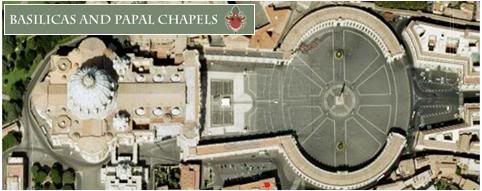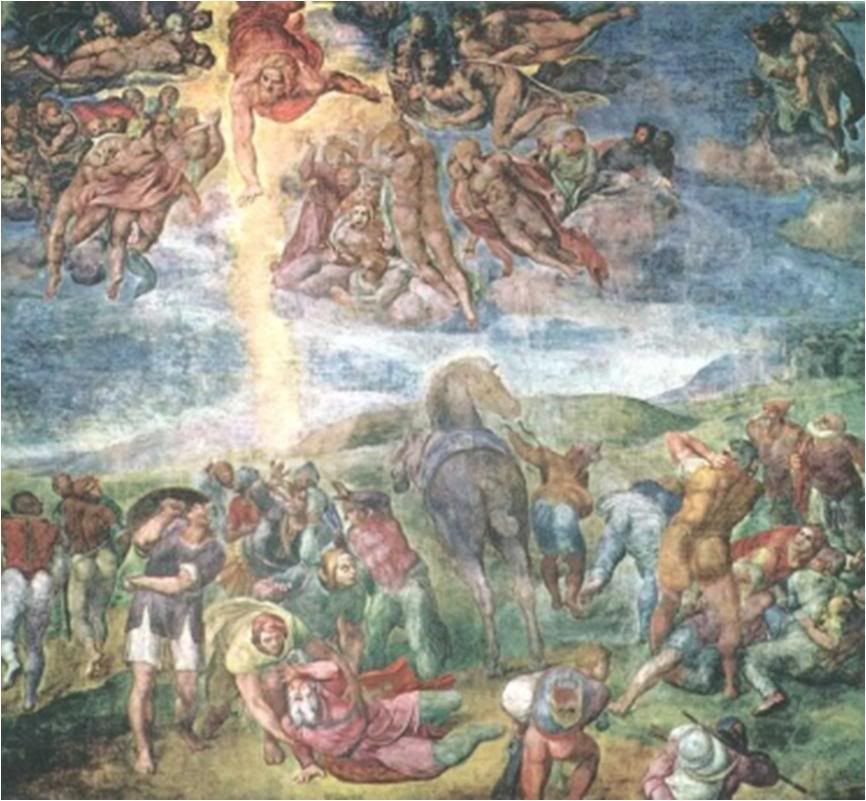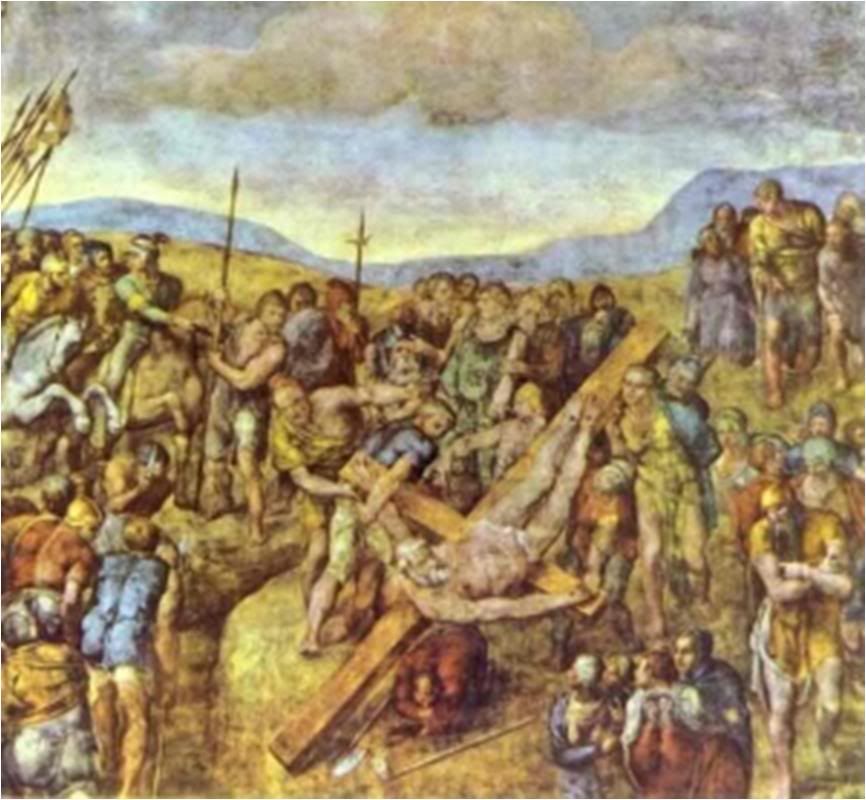 Vatican unveils restored papal chapel
Vatican unveils restored papal chapel
featuring Michelangelo murals
By Cindy Wooden


VATICAN CITY, June 30 (CNS) -- Work on the Pauline Chapel in the Apostolic Palace was not so much a restoration as a restitution of the pope's prayer space, said the director of the Vatican Museums.
Containing the last two murals Michelangelo ever painted, the private papal chapel had been under scaffolding for more than five years; it was presented to reporters June 30.
Pope Benedict XVI was scheduled to inaugurate the chapel July 4 with an evening prayer service in the presence of four dozen members of the Patrons of the Arts in the Vatican Museums.
The patrons -- laypeople from the United States, England and Ireland -- fully covered the almost $4.6 million it took to clean and restore the chapel's artwork, refurnish it and install a sophisticated new LED lighting system.
The chapel -- named after Pope Paul III, who commissioned its construction in 1537 -- has side walls that feature Michelangelo's paintings of the crucifixion of St. Peter and the conversion of St. Paul.

 NB: These photos of the two murals are pre-restoration.
NB: These photos of the two murals are pre-restoration.
Access to the chapel is from the Sala Regia, the "royal room" where popes once met visiting Catholic kings and queens.
While the room's murals focus on the church's influence and power in the temporal world, "as soon as you cross the threshold (into the Pauline Chapel), you pass into the church that lives in the dimension of eternity," said Antonio Paolucci, director of the Vatican Museums.
Traditionally the private chapel has been reserved for the pope's celebration of early morning Mass with special guests and for the adoration of the Eucharist during the day by people who work in the Apostolic Palace.
"The body of Christ is at the center, and it is surrounded by the story of the princes of the Apostles": St. Peter, to whom the popes trace their spiritual responsibility for the church, and St. Paul, from whom they inherit the mission of preaching the Gospel to all peoples and preserving the unity of Christ's disciples, Paolucci said.
Michelangelo began work on the two murals in 1542 after he had finished "The Last Judgment" in the Sistine Chapel. He completed his contribution to the Pauline Chapel in 1550 at the age of 75.
"It is a kind of spiritual testament marked by a vast sadness and deep pessimism," Paolucci said. "One has the impression that the mystery of grace offered to an unworthy humanity causes anguish for the soul of the artist, a Christian, who lived through and witnessed the religious crisis of his era, which was divided and lacerated by the Reformation."
The chapel walls feature other episodes from the lives of the two apostles by Lorenzo Sabbatini and Federico Zuccari, Italians who began their work on the chapel about 25 years after Michelangelo finished his.
Restoration of the art was not the only concern of those who worked on the chapel over the past five years, said Arnold Nesselrath, the Vatican Museums official who oversaw the effort.
"The Pauline Chapel is still one of the three papal chapels in the Apostolic Palace and has a traditional liturgical function, so we had to return the space intact" without making modifications for purely educational or documentary purpose, he said.
Paolucci told reporters that almost every pope who has served the church in the last four centuries made some kind of modification to the Pauline Chapel.
The modifications, he said, show just how personally connected each pope felt to the chapel, but they complicated the restoration work.
An international commission composed of 13 experts on Michelangelo or on the theory and practice of restoration was formed to advise the Vatican on how far to go not only in cleaning the works, but also in deciding which of the later additions to remove or keep.
In addition, U.S. Archbishop James Harvey, prefect of the papal household, and Msgr. Guido Marini, master of papal liturgical ceremonies, were involved in deciding what furnishings to use and where to place them.
Bishop Paolo De Nicolo, regent of the papal household, said that in the end, it was Pope Benedict who decided to remove the altar placed in the chapel by Pope Paul VI after the Second Vatican Council.
Pope Benedict chose to restore the original marble altar, but not to place it completely against the wall where it stood for 400 years.
"The chapel is meant for eucharistic adoration, and if the altar were against the wall it would have been very difficult to reach the tabernacle," which is flush against the wall, Bishop De Nicolo said.
He said the pope also wanted to be able to cense the entire altar -- front and back -- during liturgies, and he wanted the option of celebrating Mass facing the people or facing the cross with them.
[Modificato da TERESA BENEDETTA 01/07/2009 14:19]